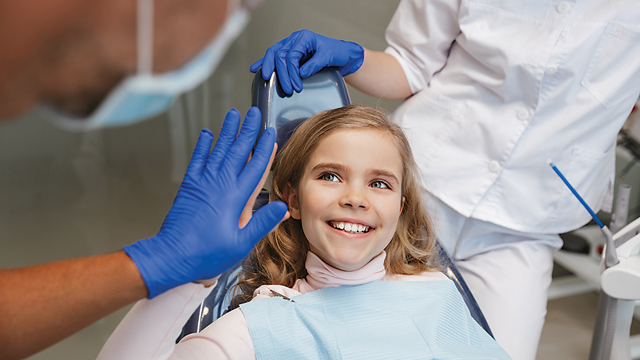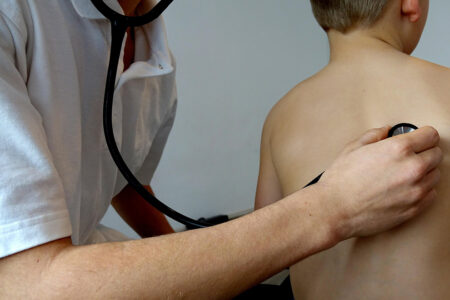Americans of all ages are spending more time and money improving their smiles through cosmetic dental work and orthodontics. Some experts attribute this increased attention to orthodontics to more aesthetic and less noticeable treatment options, made possible by cutting-edge technology. One of the most popular – and most high-tech – of these innovations is Invisalign.
This method of straightening teeth uses a series of clear, almost invisible, removable retainer-like trays, called aligners. Invisalign combines the doctor’s clinical treatment plan with proprietary 3D, computer-generated software to make sets of unique, custom-made aligners that move teeth in very precise increments.
The newest treatment advancement is called Invisalign First. Designed for children who are six to ten years old, Invisalign First offers an alternative to the bulky and uncomfortable palatal expander appliances orthodontists have used for nearly a century. When parents hear about this new treatment option for younger kids, they remark that they remember having an expander in their mouth when they were kids and how much they hated having it adjusted by their parent every day. Not only was it uncomfortable, but it was also difficult to eat, drink, and speak while wearing it.
Invisalign First is a series of custom-made clear aligners that are comfortable, form-fitted, and do not require any adjustment by the parent. Each aligner has one week of tooth movement built into it. The movement changes are very gradual, so the patient remains comfortable throughout the process. Patients change to a new aligner in the series each week.
There are many advantages to this system of clear aligners, especially for young children.
• Oral hygiene is much easier to maintain during Invisalign treatment, compared to braces. Since aligners are removable, brushing and flossing are the same as usual and takes three to four minutes. With braces, it can take fifteen minutes to brush and floss, and if this is not done thoroughly, the enamel will be damaged due to food and plaque accumulating around the braces.
• With Invisalign, there are fewer appointment visits, and visits are shorter and more comfortable.
• There are no emergency appointments with Invisalign, like there are with braces when something breaks, gets loose, and is poking the patient’s mouth.
• There are no restrictions on eating, since unlike braces, aligners are removed when eating.
• Because of the gradual nature of teeth movement, Invisalign is much more comfortable for the patient throughout the treatment.
Will This Work for My Family?
At the start of treatment, some parents express concern about their child wearing the aligners as prescribed. Based on the smiles we’re seeing on young patients, this has not been the case.
Parents are very happy with their decision to go with Invisalign First. They are surprised at how quickly they see improvement in their child’s smile and how easy the process is, including diagnostic procedures. 3D intra-oral scanning has replaced goopy impressions. These scans are more comfortable and more accurate. Plus, digital X-rays significantly reduce radiation exposure for patients.
The American Association of Orthodontists recommends that children see an orthodontist for an evaluation no later than age seven. By that age, your child has enough permanent teeth for an orthodontist to evaluate the developing teeth and jaw growth. Because the mouth and teeth are still in a period of growth during childhood, their teeth and bite are much easier to move or adjust.
Orthodontists can spot subtle problems with jaw growth and emerging teeth while some baby teeth are still present. Even though treatment may not start that young, an early examination allows us to evaluate dental development and determine when and if orthodontic treatment is necessary.
Ultimately, orthodontic treatment is not just about aesthetics and appearance. Straighter teeth and a corrected bite can help people improve overall health and keep teeth for a lifetime.







